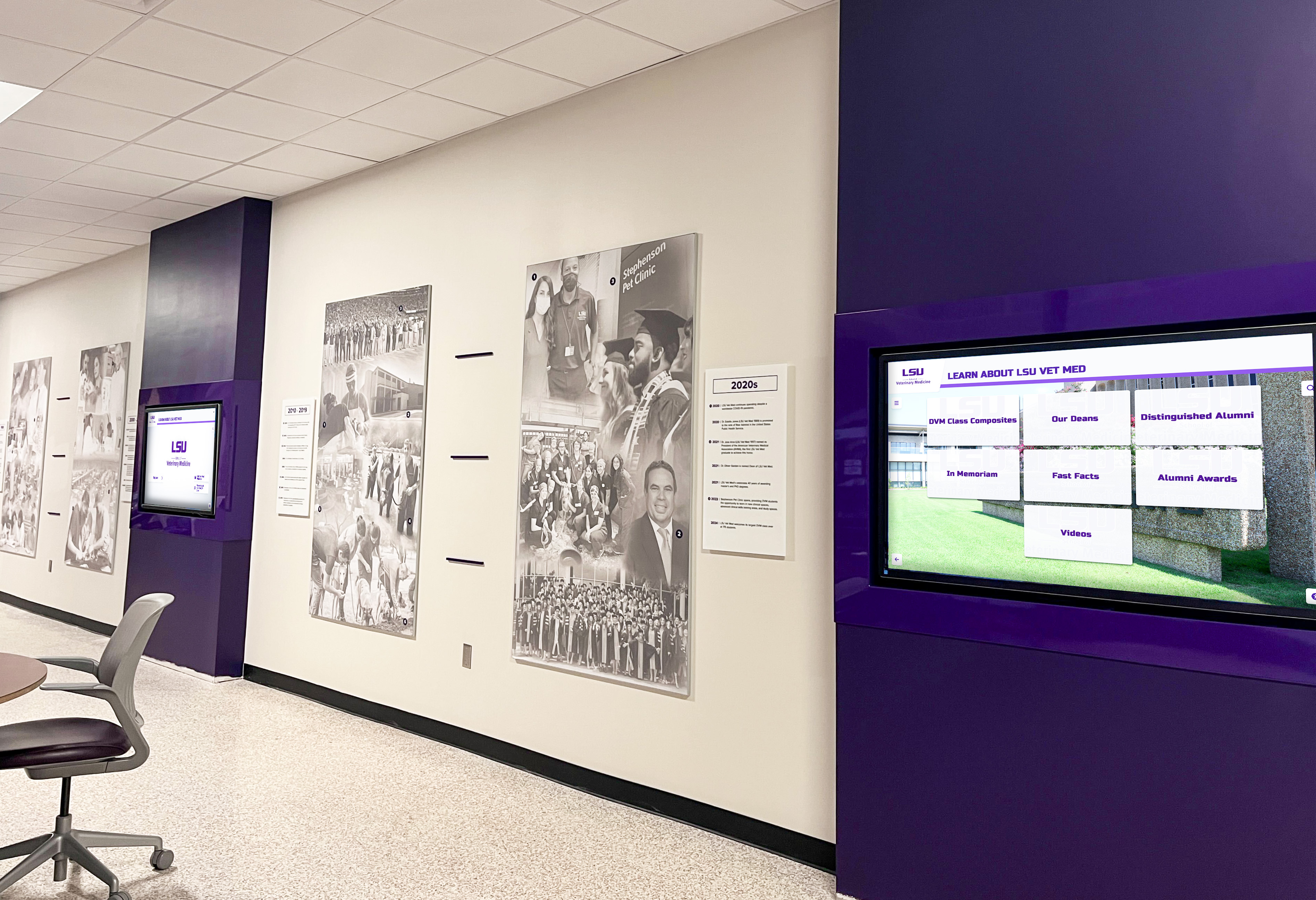Professional athletes represent the pinnacle of human athletic achievement—individuals who have dedicated their lives to mastering their craft, competing at the highest levels, and inspiring millions through their performances. Recognizing these elite athletes requires displays that match the magnitude of their accomplishments, creating spaces where their achievements are preserved, celebrated, and shared with fans, communities, and future generations.
This comprehensive guide explores every aspect of creating impactful professional athletes recognition displays—from planning and content development to modern digital solutions that bring athletic achievements to life. Whether you’re a sports organization planning a new hall of fame, a community leader recognizing local professional athletes, or an educational institution celebrating alumni who reached the professional ranks, this guide provides practical strategies for creating meaningful recognition that honors athletic excellence at the highest levels.
Understanding Professional Athletes Recognition
Professional athletes recognition differs significantly from amateur or collegiate athlete recognition due to the elite nature of professional competition and the broader cultural impact these athletes create.
What Defines Professional Athlete Recognition
Professional athlete recognition celebrates individuals who competed at the highest levels of organized sports as their primary profession. This includes athletes in major professional leagues such as the NFL, NBA, MLB, NHL, and MLS, international professional competitions in soccer, rugby, cricket, and other global sports, Olympic and Paralympic athletes who compete at elite international levels, professional individual sport athletes in tennis, golf, boxing, and mixed martial arts, and professional athletes in emerging sports and competitive leagues worldwide.
The distinguishing characteristic is that these athletes competed professionally—sports were not merely extracurricular activities but rather careers requiring complete dedication, elite skill development, and achievement at the highest competitive levels available in their sports.
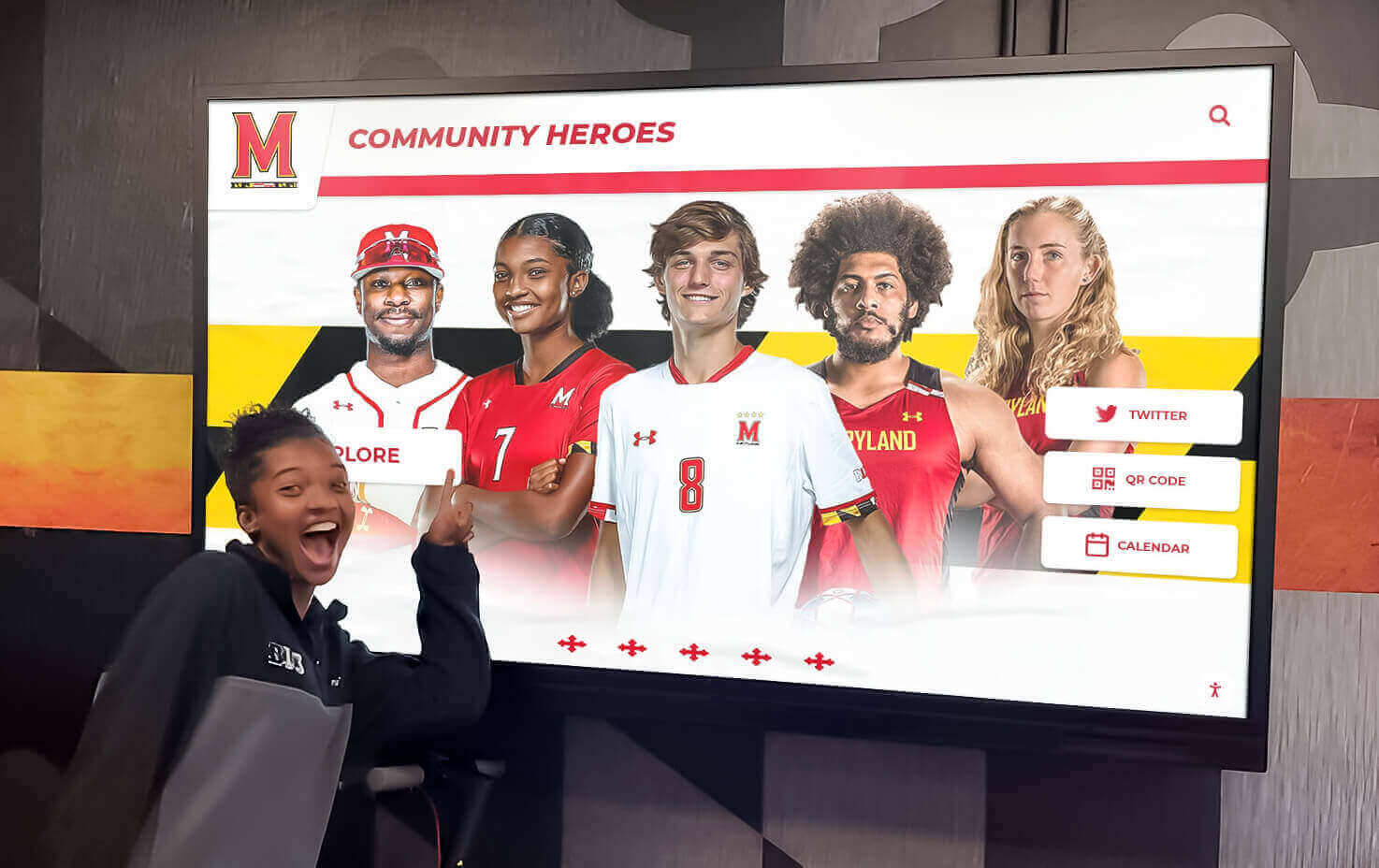
The Purpose and Impact of Professional Athlete Recognition
Professional athlete recognition serves multiple important purposes that extend beyond simple commemoration. These displays preserve sports history and document achievement for future generations, ensuring that extraordinary accomplishments don’t fade from collective memory. They provide inspiration for current athletes by showcasing tangible examples of what dedication and excellence can achieve at the highest levels.
Recognition displays strengthen community pride and identity by celebrating local connections to professional sports excellence. They create educational experiences teaching visitors about sports history, evolution, and the athletes who shaped their sports. And they build brand identity for sports organizations by highlighting institutional heritage and tradition of excellence.
For athletes themselves, professional recognition validates lifetime dedication to their sport and provides lasting acknowledgment that their achievements mattered. Many retired professional athletes express deep appreciation when their careers receive permanent recognition, particularly when displays share their complete stories rather than simply listing statistics.
Types of Professional Athletes Recognition Displays
Professional athlete recognition takes many forms depending on organizational context and recognition objectives.
Professional League and Team Halls of Fame: Major professional sports franchises maintain hall of fame programs recognizing the greatest players, coaches, and contributors in franchise history. The Dallas Cowboys Ring of Honor, Green Bay Packers Hall of Fame, and Boston Celtics Hall of Fame exemplify franchise-specific recognition programs celebrating team legends.
Multi-Sport Professional Recognition: Some facilities recognize professional athletes across multiple sports. Sports museums, community halls of fame, and civic recognition programs often celebrate diverse professional athletes connected by geography rather than sport or team affiliation.
Educational Institution Professional Athlete Recognition: High schools, colleges, and universities frequently recognize alumni who reached professional levels. These displays celebrate institutional role in athlete development while providing aspirational examples for current students. Alumni hall of fame programs often prominently feature professional athletes as exemplars of institutional excellence.
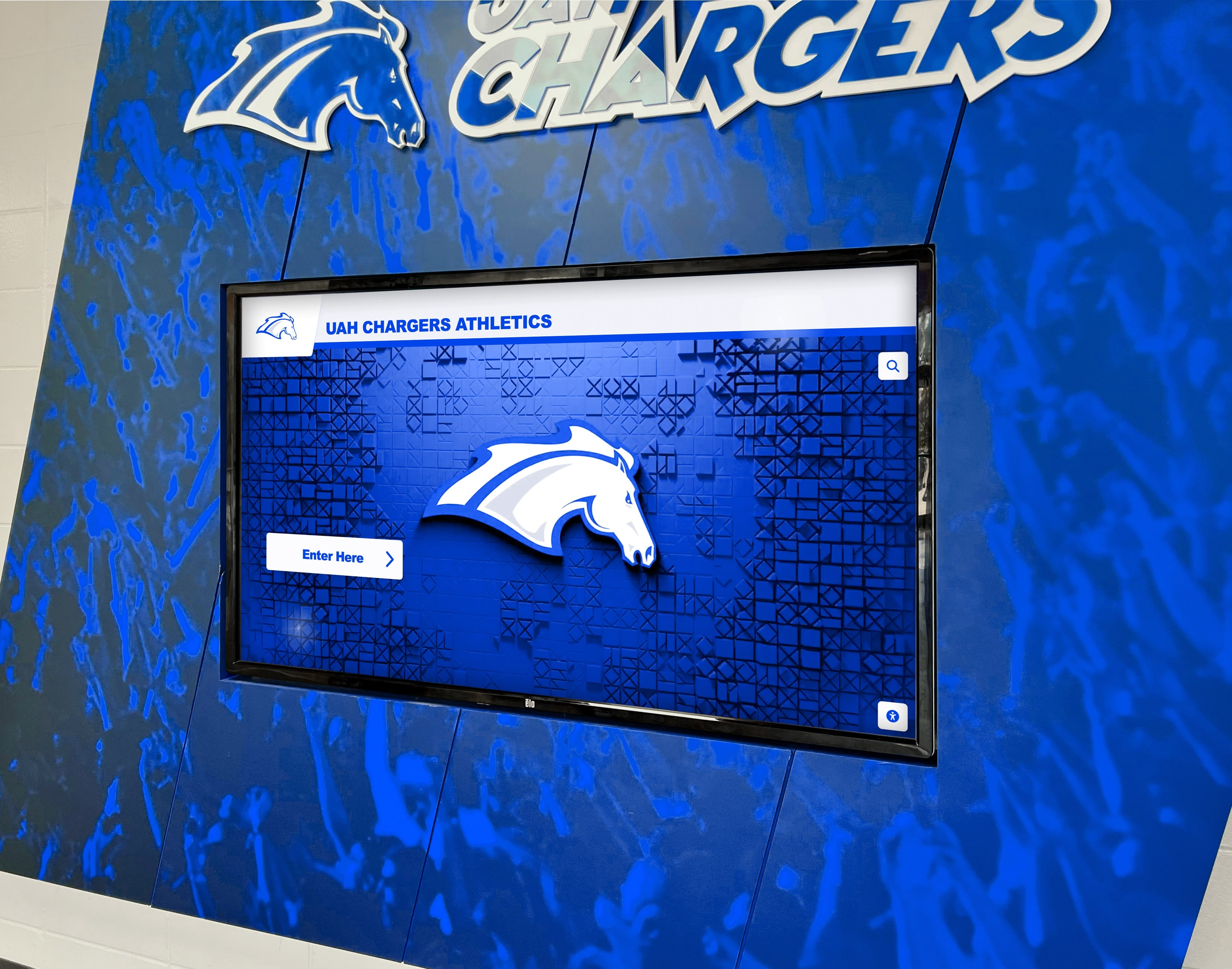
Community-Based Professional Athlete Recognition: Towns, cities, and regions create recognition displays celebrating local athletes who achieved professional success. These community programs strengthen local identity by connecting professional sports achievement to specific places and communities.
Sport-Specific Halls of Fame: Organizations like the Pro Football Hall of Fame, Naismith Memorial Basketball Hall of Fame, and Baseball Hall of Fame represent the pinnacle of sport-specific professional recognition, honoring the greatest athletes across entire sports rather than individual teams or institutions.
Planning Professional Athlete Recognition Displays
Successful professional athlete recognition requires comprehensive planning addressing multiple dimensions from criteria development to display design.
Establishing Selection Criteria for Professional Athletes
Clear selection criteria ensure recognition remains prestigious while providing transparent standards for inclusion. Professional athlete recognition criteria typically address several key factors.
Achievement Thresholds: What level of professional accomplishment warrants recognition? Criteria might include years of professional competition, championship achievements, individual awards and honors, statistical achievements and records, All-Star or Pro Bowl selections, or international competition at Olympic or world championship levels.
Achievement thresholds should reflect the prestige level you intend to maintain. A franchise hall of fame recognizing only the very greatest players might require multiple championships and individual awards. A community recognition program celebrating all local athletes who reached professional levels might simply require competing professionally regardless of career length or achievement level.
Eligibility Requirements: Most programs establish eligibility requirements including minimum time elapsed since career ended (commonly 3-5 years for professional athletes), retirement status ensuring active players aren’t considered until career completion, and character considerations ensuring inductees exemplify values the recognizing organization wants to celebrate.
Connection Requirements: For institution-based or community-based recognition, define required connections. Educational institution programs typically require graduation or attendance. Community recognition might require birth, high school attendance, or significant childhood residence in the area. Franchise halls of fame naturally limit recognition to players who competed for the organization.
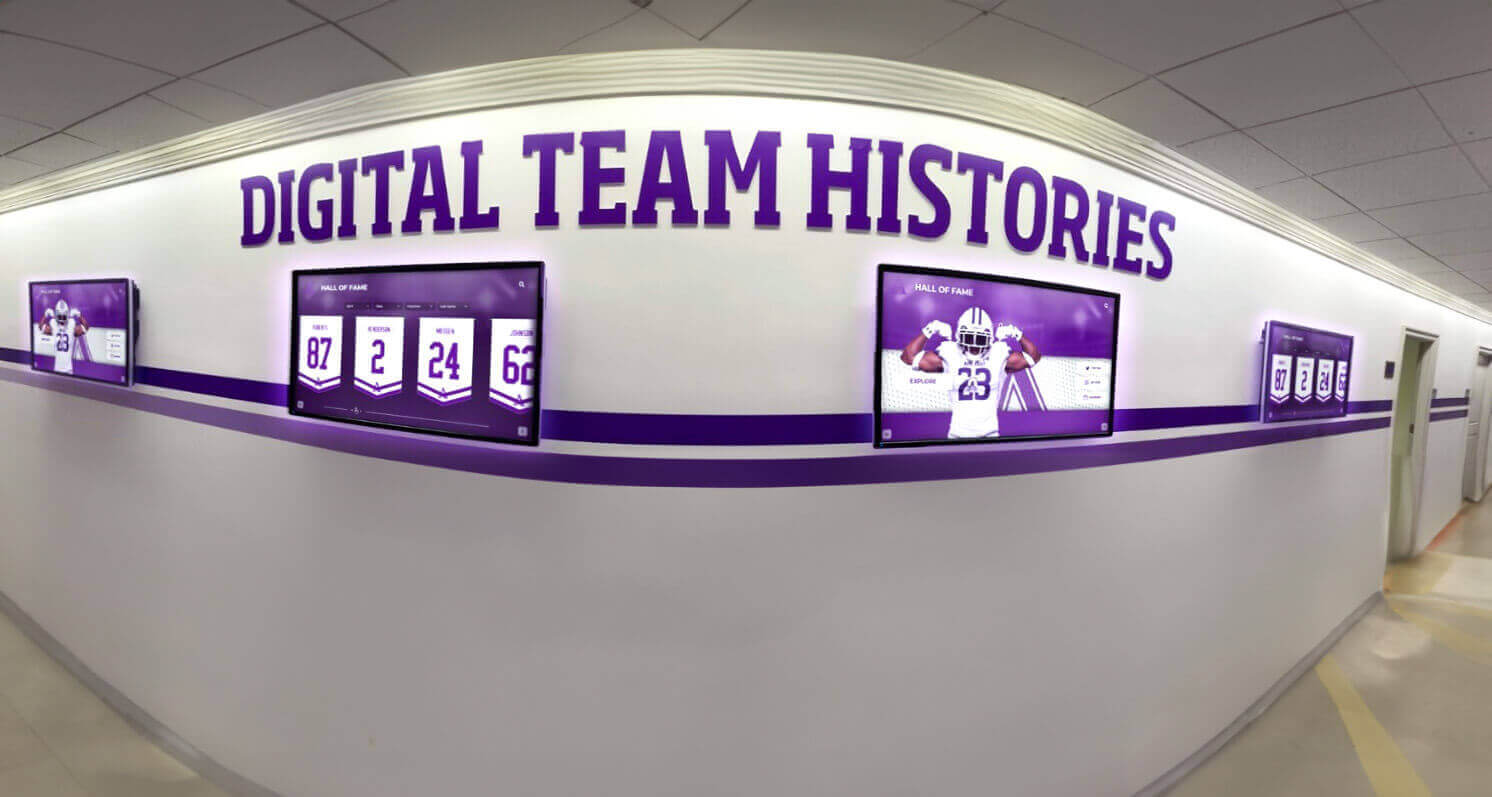
Developing Recognition Content and Storytelling
Professional athletes deserve recognition that captures the full scope of their careers and impacts rather than reducing complex careers to simple statistics.
Comprehensive Profile Elements: Effective professional athlete profiles include career statistics and achievements that document quantifiable success, career narrative explaining their path to professional levels and career highlights, position or role description providing context for their achievements, championship and postseason success documenting their contributions to team victories, and awards and honors received throughout professional careers.
Beyond professional careers, profiles should address pre-professional background including where they developed as athletes, educational background and institution attended, personal story elements that humanize athletic achievement, and post-career contributions such as coaching, broadcasting, business success, or community service.
Visual and Multimedia Content: Professional athlete recognition should leverage rich visual content including professional photography from their competitive careers, action shots capturing athletic excellence in competition moments, ceremonial photos from award presentations and championship celebrations, and video highlights showcasing signature performances that defined careers.
For retired athletes, consider including contemporary photos alongside career images, showing them as they are today. Interview footage where athletes reflect on their careers provides powerful personal perspectives that statistics cannot convey.
Historical Context: Help visitors understand what achievements meant in their historical moments. What records stood at the time? What challenges did athletes overcome? How did their achievements compare to contemporaries? Historical context transforms bare statistics into meaningful accomplishments.
Selection Committee Structure and Process
Credible recognition programs typically involve diverse selection committees rather than unilateral decisions. Committee structure might include former professional athletes who understand elite competition firsthand, sports journalists and historians who provide expertise and perspective, organizational leadership from the recognizing institution, and community representatives for community-based programs.
Selection processes commonly follow annual cycles including nomination period when candidates can be submitted, committee review sessions examining qualified nominees, deliberation and voting determining inductees, and public announcement revealing selections and celebrating honorees.
Transparent processes build credibility and help manage expectations among constituencies who care deeply about recognition decisions.
Traditional Display Approaches for Professional Athletes
Traditional physical displays have long served as the standard approach for professional athlete recognition, offering tangible, permanent tributes to athletic excellence.
Wall-Mounted Plaques and Recognition Walls
The classic professional athlete recognition approach features wall-mounted plaques displaying individual athlete photos, career highlights, statistics, and biographical information. Recognition walls become pilgrimage sites for fans who visit specifically to see these tributes to their heroes.
Traditional plaque displays provide dignified, timeless aesthetic that conveys prestige and permanence. They create physical spaces where fans can gather and reflect on athletic legacy. And they require no technology or power, functioning reliably for decades with minimal maintenance.
However, traditional displays face significant limitations. Physical space constraints ultimately limit how many athletes can receive recognition as programs mature. Information capacity restrictions mean only abbreviated content fits on physical plaques. Updates and changes require expensive fabrication and installation. And static presentations offer no opportunities for multimedia storytelling or interactive engagement.

Physical Trophy and Memorabilia Displays
Many professional athlete recognition programs incorporate physical artifacts including championship trophies and rings, game-worn jerseys and equipment, signed memorabilia such as balls, bats, or gloves, awards and honors received throughout careers, and historical photographs and newspaper clippings documenting achievement.
These tangible items create emotional connections particularly powerful for fans who watched these athletes compete. Trophy case displays showcase championship hardware and memorabilia in secure, visible presentations.
Physical memorabilia displays require substantial space, security considerations for valuable items, climate control to prevent deterioration, and ongoing maintenance to preserve artifacts. Many programs find that available memorabilia exceeds available display space, forcing difficult decisions about what to show and what to store.
Dedicated Hall of Fame Facilities
Major professional sports organizations sometimes create dedicated hall of fame facilities or museums. The Pro Football Hall of Fame in Canton, Ohio, and the Basketball Hall of Fame in Springfield, Massachusetts exemplify comprehensive facilities dedicated entirely to sport recognition.
Dedicated facilities provide immersive recognition experiences, accommodate extensive collections, become tourist destinations generating economic impact, and create spaces for events, ceremonies, and community gatherings.
The substantial facility investment and ongoing operational costs mean this approach suits only major sports organizations with significant resources and visitor traffic. Most recognition programs operate within existing facilities rather than dedicated buildings.
Modern Digital Solutions for Professional Athlete Recognition
Digital technology transforms professional athlete recognition by eliminating space constraints, enabling rich multimedia storytelling, and creating engaging interactive experiences impossible with traditional approaches.
Interactive Touchscreen Recognition Systems
Interactive digital displays utilize large touchscreen technology creating dynamic recognition experiences where visitors actively explore athlete profiles, career highlights, and statistical achievements rather than passively viewing static plaques.
These systems feature commercial-grade touchscreen displays typically 55-75 inches, cloud-based content management enabling easy updates and additions, searchable databases allowing visitors to quickly find specific athletes, and multimedia content incorporating photos, video highlights, career statistics, and detailed narratives.
Key Advantages of Digital Professional Athlete Recognition:
Unlimited Recognition Capacity: Digital platforms eliminate space constraints that plague traditional displays. Rather than limiting recognition to physically available wall space, digital systems accommodate comprehensive recognition of all deserving professional athletes without forced exclusions based on space limitations.
Rich Multimedia Storytelling: Video highlight packages showcase athletic excellence in ways static photos cannot match. Interview clips where athletes reflect on careers add personal dimensions. Photo galleries document career progression from early days through retirement. Digital platforms transform recognition from simple acknowledgment into comprehensive storytelling.
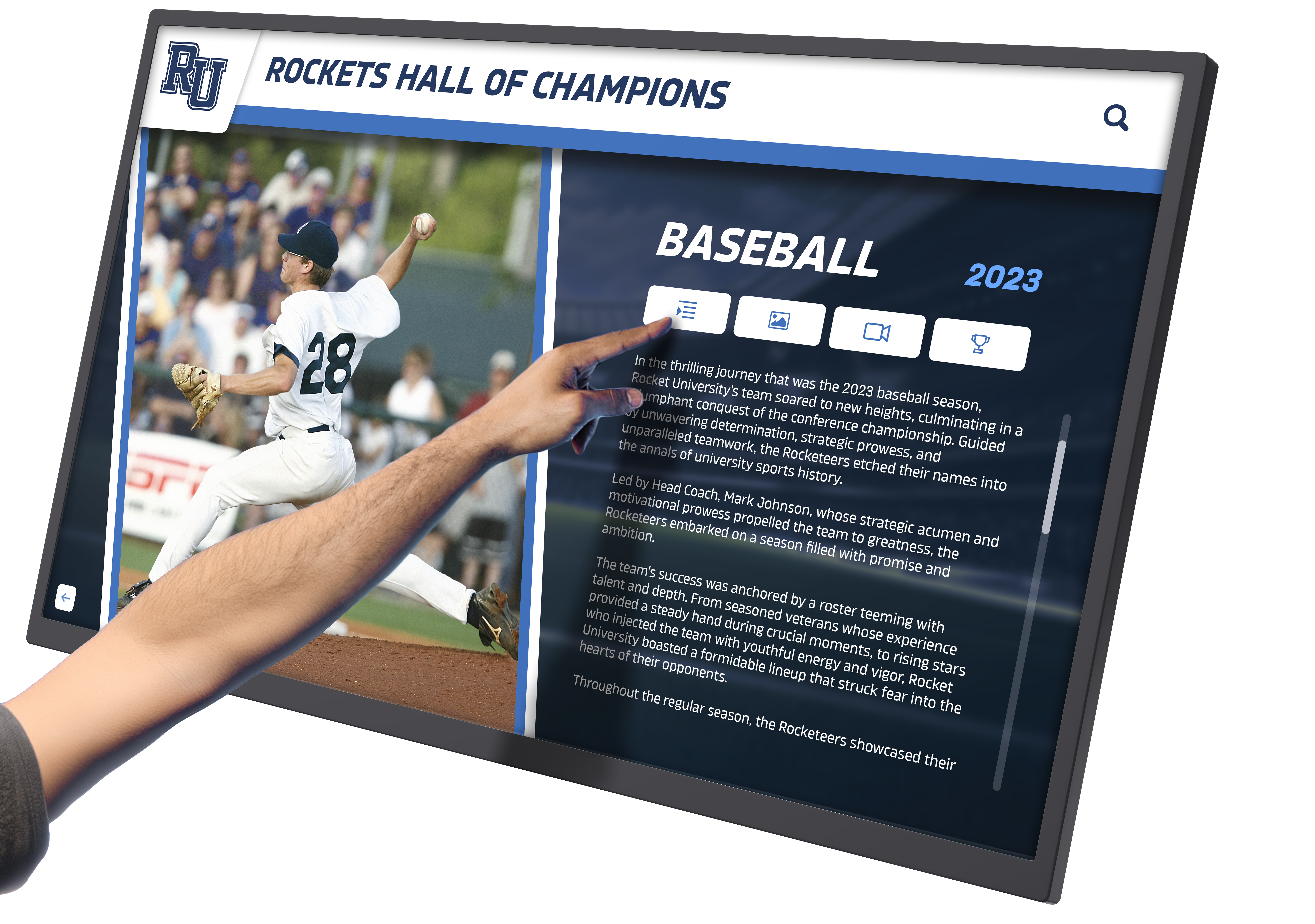
Easy Updates and Additions: Adding new professional athlete inductees requires simply updating software content rather than expensive physical fabrication and installation. Career statistics can be updated. New photos and videos can be incorporated. Content improvements happen through software updates rather than construction projects.
Enhanced Visitor Engagement: Interactive exploration creates more engaging experiences than reading static plaques. Visitors spend more time with digital recognition, exploring multiple athlete profiles and discovering connections they might not have found in traditional displays. Touch interaction creates active participation rather than passive viewing.
Analytics and Insights: Digital systems provide analytics revealing which athletes attract most interest, how long visitors engage with content, what search patterns emerge, and when peak usage occurs. These insights inform content development priorities and demonstrate recognition program value to stakeholders.
Solutions like Rocket Alumni Solutions provide specialized platforms designed specifically for sports and alumni recognition, offering features tailored to professional athlete recognition needs including sport-specific organization, statistical integration, video highlight hosting, and sophisticated search and filtering capabilities.
Online and Mobile Professional Athlete Recognition
Digital recognition extends beyond physical installations through web-based platforms accessible worldwide. Online professional athlete recognition enables fans anywhere to explore athlete profiles and careers, social media integration amplifying recognition reach, mobile accessibility for visitors during facility tours, and preservation of content in durable digital formats.
Online hall of fame platforms complement physical installations by making recognition content universally accessible. A fan who cannot visit physical facilities can still explore comprehensive professional athlete recognition from anywhere with internet access.
Many professional sports organizations implement omnichannel strategies combining physical touchscreen installations at stadiums and facilities with online platforms accessible globally. This approach maximizes both on-site impact and worldwide fan engagement.
Video Highlight Integration
Professional athletes deserve recognition showcasing their abilities in action, not just statistical summaries. Video highlight integration represents one of digital recognition’s most powerful advantages. Comprehensive video libraries can document signature performances and memorable moments, career highlight packages condense entire careers into engaging summaries, playoff and championship moments capture athletes at their competitive peaks, and contextual game footage shows plays within actual game situations.
For educational institutions recognizing alumni who reached professional levels, highlighting professional signings through video and multimedia content creates powerful recruiting tools showing current students what pathways are possible.
Modern content management systems make video hosting and streaming straightforward. Rather than requiring technical expertise, purpose-built recognition platforms handle video integration seamlessly.
Content Development for Professional Athlete Recognition
Compelling content determines whether recognition displays achieve their potential to honor athletes, engage visitors, and preserve history effectively.
Gathering Career Information and Statistics
Professional athlete recognition requires accurate, comprehensive career information. Data gathering approaches include official league statistics from NFL, NBA, MLB, NHL, or other professional leagues, media guides and team publications documenting seasons and achievements, sports reference websites like Pro-Football-Reference.com or Basketball-Reference.com, and direct outreach to athletes requesting information and personal materials.
Career statistics should be presented in context. Rather than simply listing numbers, explain what achievements meant. Was a record particularly significant? Did an athlete pioneer a new playing style? Context transforms data into meaningful stories.
Collecting Photos and Multimedia Assets
Visual content brings professional athlete recognition to life. Comprehensive collections include professional photography from team photographers, action photography capturing athletes in competition, award ceremony and championship celebration photos, contemporary photos showing athletes today, and family-provided personal photos offering intimate perspectives.

Video content might include game footage and highlight packages, interview clips reflecting on careers, award ceremony footage documenting recognition moments, and documentary content providing deeper career context.
Securing rights to use professional sports league content sometimes requires permissions. Many leagues and teams cooperate with recognition programs, particularly for institutional alumni recognition or community programs, but clarifying usage rights prevents legal issues.
Writing Compelling Athlete Narratives
Statistics alone don’t capture what made professional athletes special. Effective narratives address origin stories explaining how athletes discovered their sports and developed their talents, obstacles overcome during career journeys, defining moments that characterized careers, impact on teammates and organizations, legacy and influence on their sports, and post-career contributions showing life after professional competition.
Great professional athlete narratives humanize athletic achievement. What personal qualities enabled success beyond physical ability? What sacrifices did careers require? What do they value most when reflecting on professional careers? Personal dimensions create emotional connections that statistical summaries cannot achieve.
Ensuring Accuracy and Athlete Involvement
Accuracy matters critically in professional athlete recognition. Factual errors undermine credibility and disrespect athletes being honored. Verification processes should include fact-checking all statistics and achievements against authoritative sources, athlete review allowing honorees to verify biographical information and approve content, and careful attention to name spellings, date accuracy, and achievement details.
When possible, involve professional athletes in content development. Athletes often provide materials, stories, and perspectives that outside researchers cannot access. Many retired athletes appreciate opportunities to share their stories for permanent recognition.
Recognition Display Design and Installation
Display design significantly impacts how effectively professional athlete recognition engages visitors and honors athletes.
Location Selection for Maximum Impact
Recognition display location influences visibility, traffic, and overall program impact. Effective locations provide high visibility to target audiences including fans, community members, and organizational stakeholders. They offer appropriate prestige matching the honor being conveyed. They provide adequate space for comfortable viewing and interaction. And they connect meaningfully to athletic contexts—stadium concourses, arena lobbies, athletic facilities, or community centers.
For professional sports facilities, consider locations where fans naturally congregate before events, during intermissions, or after games. Recognition displays become pre-game destinations and postgame discussion focal points.
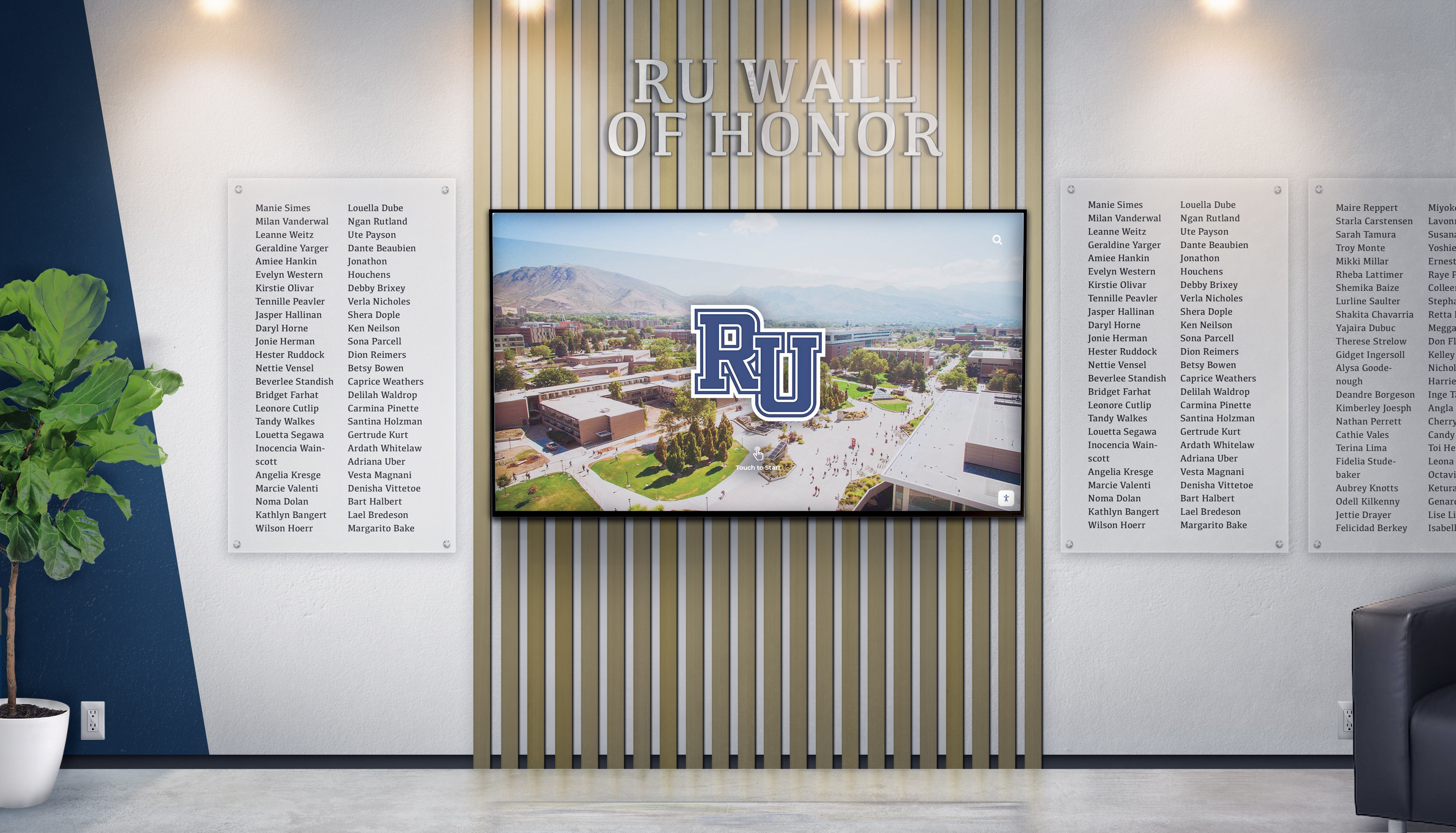
Educational institutions might locate professional athlete recognition in athletic facilities, alumni centers, or main campus buildings where current students regularly encounter inspiring examples of what alumni achieved.
Community-based professional athlete recognition might occupy civic centers, libraries, recreation facilities, or dedicated sports complexes serving as community gathering places.
Physical Display Design Considerations
Whether implementing traditional or digital displays, thoughtful design creates experiences worthy of professional achievement. Design elements include aesthetic quality matching prestige of recognition being conveyed, consistent branding incorporating organizational identity, appropriate lighting ensuring visibility without glare, accessibility considerations ensuring all visitors can engage regardless of physical abilities, and durability suited to anticipated traffic and environmental conditions.
For digital displays specifically, ensure adequate viewing distances allowing comfortable interaction, appropriate screen heights for diverse visitor heights, power and network infrastructure supporting display requirements, and security measures protecting valuable equipment.
Creating Spaces for Reflection and Appreciation
Effective professional athlete recognition creates spaces conducive to reflection rather than simply information display. Design considerations might include seating areas allowing visitors to spend time with recognition content, appropriate acoustic treatment minimizing noise distractions in viewing areas, complementary exhibits incorporating memorabilia or artifacts, and event space capabilities allowing recognition areas to host ceremonies and gatherings.
The most successful recognition displays become destinations where visitors intentionally spend time rather than simply passing through. Thoughtful spatial design encourages this contemplative engagement.
Special Recognition Categories in Professional Sports
Comprehensive professional athlete recognition addresses various achievement types and recognition categories beyond individual athlete careers.
Championship Team Recognition
Professional championship teams deserve collective recognition alongside individual athletes. Championship team displays might include complete team rosters linking to individual athlete profiles where applicable, season records and playoff results documenting championship journeys, coaching staff recognition honoring leadership, game-by-game results and statistical leaders, and historical context about championships’ significance.
Team recognition displays create opportunities to celebrate collective success while connecting to individual contributors.
Coaching and Leadership Recognition
Professional success depends on excellent coaching and organizational leadership. Recognition programs should address head coaches whose strategic vision and leadership guided teams, assistant coaches and coordinators whose specialized expertise developed players, general managers and executives who built championship organizations, and trainers and support staff whose work enabled athlete performance and health.
These recognition categories acknowledge that professional sports success requires comprehensive organizational excellence, not just talented athletes.
Pioneering Athletes and Barrier Breakers
Some professional athletes warrant special recognition not just for performance excellence but for transformative impact on sports themselves. Special recognition categories might celebrate athletes who broke color barriers and created opportunities for others, women pioneers who established professional leagues and opportunities, athletes who changed how sports were played through innovation, and individuals whose advocacy advanced athlete rights and welfare.
This recognition acknowledges that professional sports evolved through brave individuals who challenged status quo and expanded possibilities for all who followed.

Community Impact and Humanitarian Recognition
Many professional athletes leverage platform and resources for significant community impact beyond their sports. Recognition programs might create categories celebrating charitable foundation work addressing community needs, advocacy for social causes and underserved populations, youth development programs inspiring and supporting young people, and post-career community leadership continuing impact beyond athletic careers.
These categories communicate that professional athlete recognition values complete contributions, not just competitive achievement.
Integrating Professional Athlete Recognition With Organizational Goals
Strategic recognition programs support broader organizational objectives beyond simply honoring past achievement.
Supporting Fan Engagement and Brand Building
Professional athlete recognition strengthens fan engagement with sports organizations. Recognition displays create compelling pre-game and post-game destinations increasing facility dwell time. They provide shareable content amplifying organizational brand through social media. They strengthen emotional connections between fans and franchises through shared history. And they create tradition and institutional identity differentiating organizations from competitors.
Many professional sports franchises report increased merchandise sales, enhanced season ticket holder satisfaction, and improved brand perception following significant recognition program investments.
Enhancing Recruiting and Player Development
For educational institutions recognizing alumni who reached professional levels, recognition serves powerful recruiting functions. Professional athlete recognition attracts prospective student-athletes by demonstrating clear pathways from institutional programs to professional careers.
Current athletes benefit from understanding what excellence looks like and what former athletes achieved. Recognition creates aspirational targets motivating current performance while demonstrating that professional pathways exist for those who pursue excellence.
Supporting Development and Fundraising Initiatives
Professional athlete recognition integrates strategically with development and fundraising programs. Recognition provides cultivation opportunities engaging professional athletes as donors, creates recognition opportunities for supporters whose contributions funded facilities or programs, demonstrates institutional tradition and excellence to prospective donors, and provides naming opportunities where donors can sponsor specific recognition program elements.
Development professionals increasingly leverage digital recognition platforms supporting both athletic and donor recognition within comprehensive systems.
Building Community Pride and Identity
Community-based professional athlete recognition strengthens civic pride and identity. These programs celebrate local connections to sports excellence, create tourist attractions and economic development opportunities, provide educational experiences for local schools and youth programs, and strengthen community identity through shared pride in local achievements.
Many communities report that professional athlete recognition generates substantial local interest, media coverage, and civic engagement that extends well beyond sports contexts.
Maintaining and Updating Professional Athlete Recognition
Successful recognition programs require ongoing management ensuring displays remain current, accurate, and engaging.
Content Management and Regular Updates
Professional athlete recognition should evolve as new athletes earn recognition and as additional content becomes available for existing inductees. Regular maintenance includes adding new inductee classes annually or according to selection cycle schedules, updating career information as post-career achievements accumulate, incorporating newly available photos or video content, and correcting any errors or inaccuracies that come to light.
Digital recognition platforms make updates straightforward through software content management rather than requiring physical construction. Cloud-based systems allow content updates from anywhere, maintaining recognition currency easily.
Technology Maintenance and Upgrades
Digital recognition systems require ongoing technology maintenance including software updates ensuring security and functionality, hardware maintenance preserving display equipment condition, network connectivity monitoring ensuring reliable operation, and periodic technology refresh as display hardware ages or newer capabilities emerge.
Most professional touchscreen systems operate reliably for 5-10 years with appropriate maintenance. Planning for eventual hardware refresh as part of long-term program management prevents recognition displays from becoming outdated.
Gathering Feedback and Measuring Impact
Systematic feedback collection helps optimize professional athlete recognition programs over time. Feedback mechanisms might include visitor surveys assessing satisfaction and engagement, analytics data revealing usage patterns and popular content, social media monitoring tracking online engagement and sentiment, and athlete feedback from inductees about their recognition experience.
This feedback informs continuous improvement ensuring recognition programs evolve based on actual user experience rather than assumptions about what works.
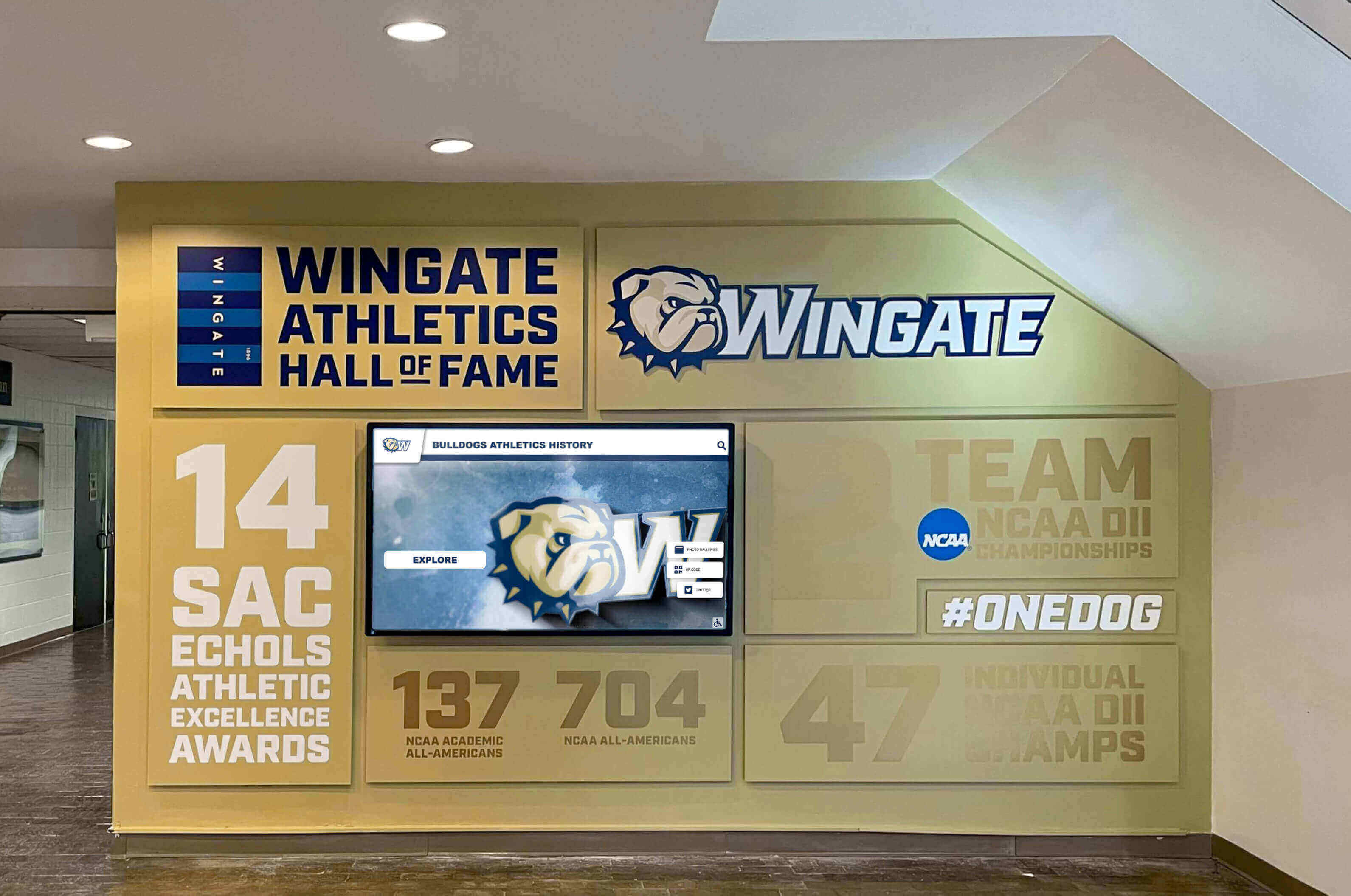
Case Studies: Effective Professional Athlete Recognition
Learning from successful implementations helps inform planning and design decisions.
Educational Institution Alumni Professional Athlete Recognition
Many universities maintain comprehensive recognition for alumni who reached professional ranks across multiple sports. These programs typically feature searchable databases filtering by sport, graduating class, or professional league, video highlight integration showcasing college and professional careers, statistical comparison showing college versus professional achievement, and connections to broader student recognition programs celebrating diverse forms of excellence.
The most effective institutional programs position professional athlete recognition as one dimension of comprehensive alumni achievement celebration rather than elevating athletic success exclusively above other accomplishments.
Community-Based Professional Athlete Halls of Fame
Community recognition programs celebrating local professional athletes across all sports create powerful civic pride. Successful community programs typically feature inclusive selection recognizing all who reached professional levels regardless of career length, local historical context connecting athletes to specific communities and schools, community involvement opportunities where athletes engage with youth programs, and civic ceremony and celebration marking inductions and program milestones.
These programs strengthen community identity while honoring individuals who achieved elite success while maintaining local connections.
Professional League and Franchise Recognition Excellence
Major professional sports franchises demonstrate how elite recognition enhances brand and fan engagement. The Dallas Cowboys Ring of Honor, Green Bay Packers Hall of Fame, and similar franchise-specific recognition programs share common characteristics including highly selective criteria maintaining prestigious distinction, integration with game-day experience through ceremonies and promotions, permanent physical presence in stadiums creating pilgrimage destinations, and comprehensive multimedia content bringing legendary performances to life.
These franchise programs demonstrate that professional athlete recognition serves strategic organizational objectives while appropriately honoring deserving athletes.
Future Trends in Professional Athlete Recognition
Recognition technology and approaches continue evolving with emerging capabilities that will enhance professional athlete recognition.
Emerging Recognition Technologies
Expect continued innovation including augmented reality overlaying digital recognition content on physical spaces during facility tours, virtual reality experiences recreating iconic performances and championship moments, AI-generated content creating personalized highlight packages based on visitor interests, and holographic displays creating three-dimensional athlete presentations.
These technologies will make historical achievements more accessible and engaging, particularly for younger audiences who connect readily with immersive digital experiences.
Social and Interactive Recognition Platforms
Future recognition systems will likely feature enhanced social connectivity allowing fans to share favorite athlete profiles and highlights, community contribution features where verified fans can submit memories and photos, gamification elements creating engaging exploration experiences, and live integration with current games and events connecting historical and contemporary achievement.
This participatory approach transforms recognition from institutional broadcast into community conversation.
Integration With NFTs and Digital Collectibles
Non-fungible token (NFT) technology creates possibilities for digital memorabilia linked to recognition programs. Professional athletes and organizations experiment with NFT platforms enabling unique digital collectible ownership, verified authenticity for digital memorabilia, integrated recognition where NFT ownership connects to hall of fame platforms, and new revenue models supporting recognition program operations.
These emerging technologies will likely influence how professional athlete recognition operates and how fans engage with sports legacy.
Conclusion: Honoring Excellence at the Highest Levels
Professional athletes represent human achievement at its finest—individuals who reached the pinnacle of competitive excellence through talent, dedication, perseverance, and sacrifice. Recognition displays honoring these elite athletes serve purposes far beyond simple commemoration. They preserve sports history for future generations, inspire current athletes to pursue their own excellence, strengthen community pride and organizational identity, create educational experiences teaching sports evolution and achievement, and provide athletes themselves with meaningful acknowledgment that their contributions mattered.

Whether implemented through traditional physical displays, modern digital interactive systems, or hybrid approaches combining both elements, effective professional athlete recognition requires thoughtful planning addressing selection criteria, comprehensive content development, strategic display design, and ongoing management and evolution.
Programs that create inclusive recognition celebrating diverse athletes and achievement types, leverage multimedia storytelling bringing careers to life, provide engaging interactive experiences encouraging visitor exploration, and integrate strategically with broader organizational objectives from fan engagement to community building create maximum impact while appropriately honoring athletic excellence at professional sports’ highest levels.
For organizations ready to create or enhance professional athlete recognition programs, modern digital solutions like Rocket Alumni Solutions provide comprehensive capabilities specifically designed for sports recognition needs. These specialized platforms enable unlimited recognition capacity, rich multimedia storytelling, sophisticated search and discovery, easy content management, and analytics demonstrating program impact—creating recognition experiences worthy of professional athletic achievement while serving strategic organizational objectives.
Professional athletes dedicate their lives to pursuing excellence at the highest levels. Recognition displays honoring their achievements should reflect the magnitude of their accomplishments, celebrate their complete stories, and inspire all who encounter their legacies to pursue their own forms of excellence.
